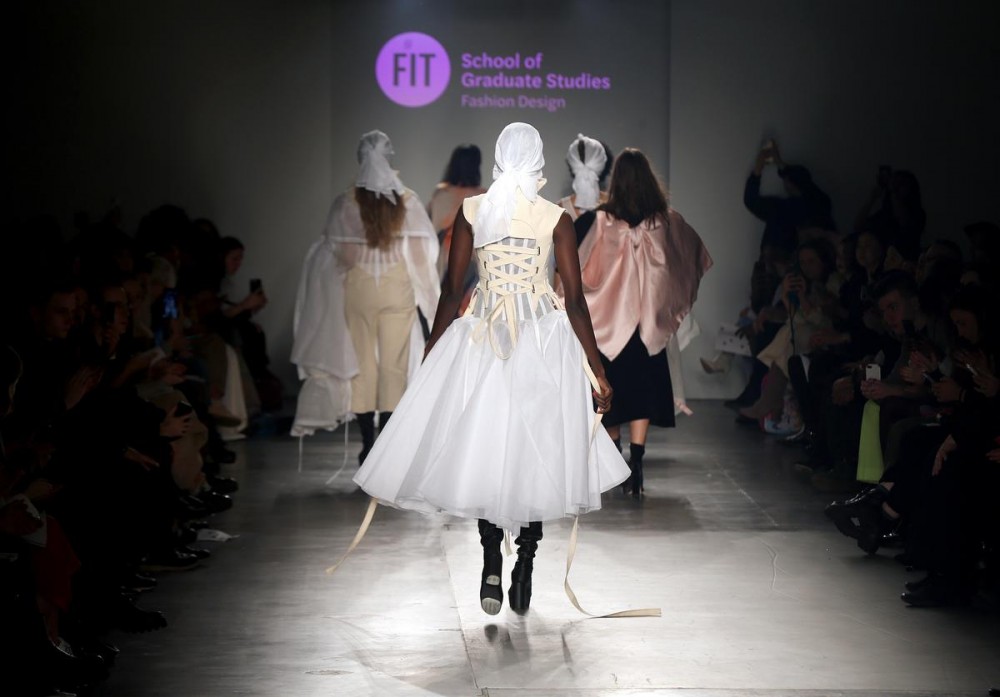An alumni fashion show hosted by the Fashion Institute Technology on Feb. 7 ended up crossing serious lines in its attempt to be cutting-edge. In addition to the avant-garde clothing, models were made to wear accessories that were intended to highlight “ugly features the body.” When an African-American model, Amy Lefevre, pointed out the racist implications placing her in monkey ears and oversized lips, she was told by one the staff members that it was fine for her to feel uncomfortable for only 45 seconds. “I was literally shaking. I could not control my emotions. My whole body was shaking. I have never felt like that in my life,” Lefevre told The Post afterwards. “People color are struggling too much in 2020 for the promoters not to have vetted and cleared accessories for the shows.” Lefevre ended up walking in the show without the accessories, but angrily stormed out once it finished. Of course, this story sparked outrage once it made its way to the public.
FIT president, Dr. Joyce F. Brown, initially fered a semi-defensive response to the situation. “This program protects a student’s freedom to craft their own personal and unique artistic perspectives as designers, to be even what some would consider to be provocative, so that they find that voice,” she said in a statement. “However provocative design and fashion might be though, my commitment to ensure that people are not made to feel uncomfortable, fended, or intimidated is also the utmost importance not only to me personally but to the college community as well. We take this obligation very, very seriously and will investigate and take appropriate action regarding any complaint or concern that is made in this situation.”
On Tuesday (Feb. 18), Brown penned a more lengthy apology, which still defended the innocuous intention behind the costumes. “Currently it does not appear that the original intent the design, the use accessories or the creative direction the show was to make a statement about race,” Brown wrote. “However, it is now glaringly obvious that has been the outcome.” Read the full statement below.
On Friday, February 7th, as part New York Fashion Week, the FIT MFA program in fashion design held its first graduating students runway show at Chelsea Piers. There were over 100 guests in the audience to witness both their achievements and creativity. As many you now know, there was an unfortunate and disturbing reaction to the show that I want to address.As we understand it, some the students and models involved in the show were fended by the accessories—large prosthetic ears and lips and bushy eyebrows—used to style one particular collection. Calling them racist, one model refused to wear these items and indeed walked down the runway without them.
Currently it does not appear that the original intent the design, the use accessories or the creative direction the show was to make a statement about race; however, it is now glaringly obvious that has been the outcome. For that, we apologize—to those who participated in the show, to students, and to anybody who has been fended by what they saw.
Let me be clear: no person should be made to feel uncomfortable—particularly about race—in service their work, job, livelihood, or course study. Right now, we are actively investigating how this happened. And as you’ll read, we have outlined several steps to address the concerns and questions students, faculty, and our community. We take this very seriously and our response and actions going forward will reflect that.
It is my position that all students must be afforded the safe space and freedom to learn and develop their voice, even if the voice is provocative to some. At the same time, I am deeply committed to creating a teaching and learning environment in which people are not fended or intimidated. There is a balance that must be struck between these two imperatives, one that is not always easy to find, but it is the college’s responsibility to find it. As both a former faculty member and an administrator, I appreciate how fine a line there is to draw between these two.
Consequently, we must, as educators, be certain we are providing students the cultural and historical perspectives they need as they realize their artistic vision. Simultaneously, we must provide guidance so that they recognize and respect potential risks and unintended consequences their creativity. Regrettably, we failed in this instance to recognize a creative statement that could have negative consequences. Regardless intent or artistic vision, we must be continually aware that which constitutes an authentic artistic expression, and that which creates a risk to the intended message and interpretation the art form. There is no room for error which can be interpreted as racism, homophobia, religious intolerance or any other kind bigotry.
In the days and weeks that follow, as mentioned above, we will be taking several steps to address the concerns our community. We will be engaging with our Diversity Council, our Faculty Senate, the UCE and the Student Government Association to continue this important conversation; we will put in place safeguards to ensure that a situation like this will not happen again; and finally, there will be an ongoing investigation about the event itself—how it occurred, who was involved, and why there was no immediate follow-up.
This is not the moment to simply remind ourselves all the good and productive efforts we have made in the name diversity, inclusion and civility. I have said that civility and diversity are a work in progress on this campus. We have to recognize as individuals and as a community that we cannot be complacent and that there is still much work to be done—and I am personally committed to making that happen.
